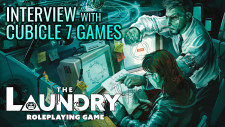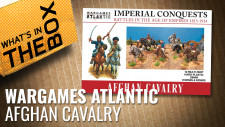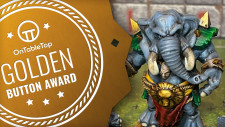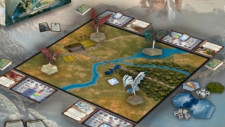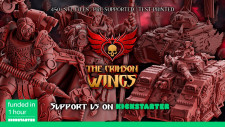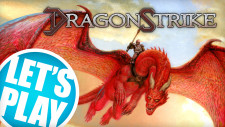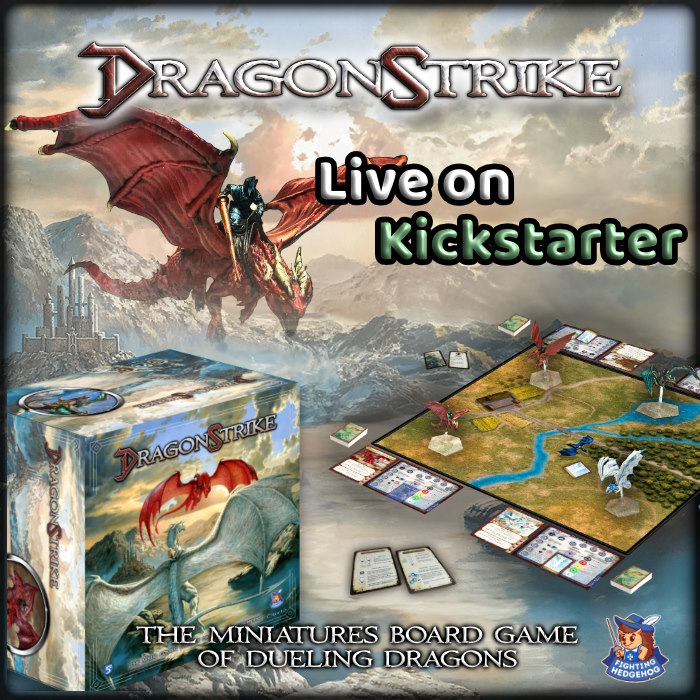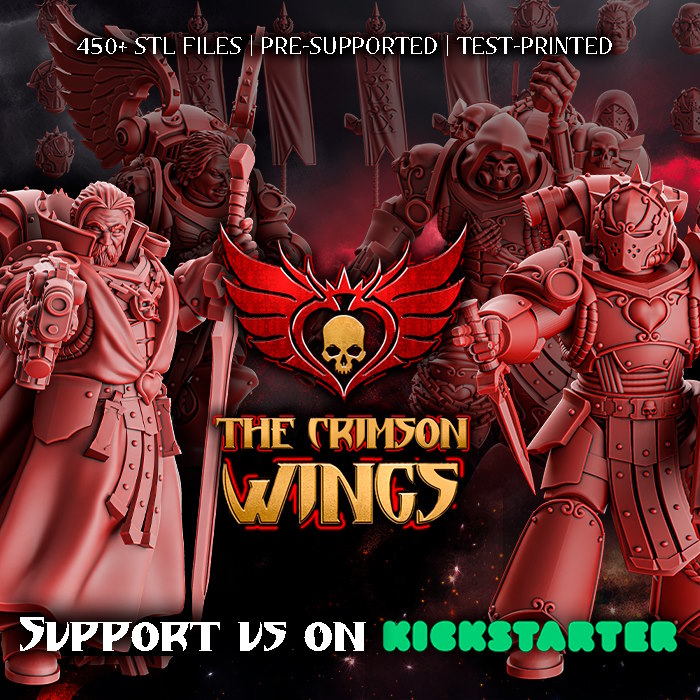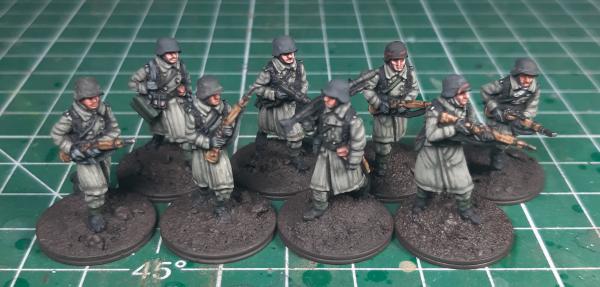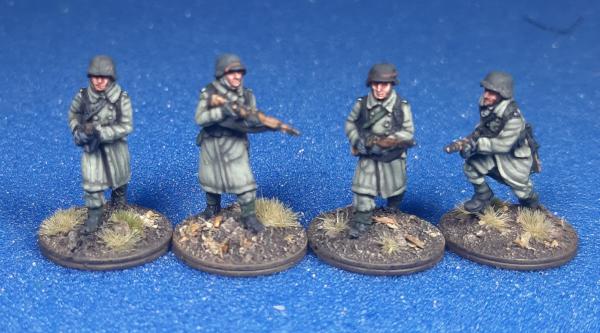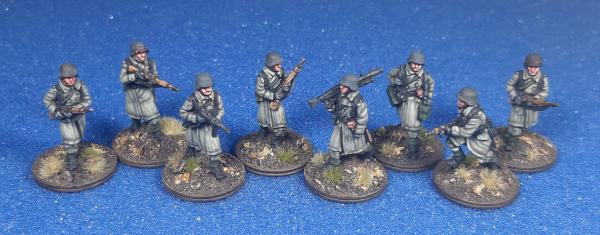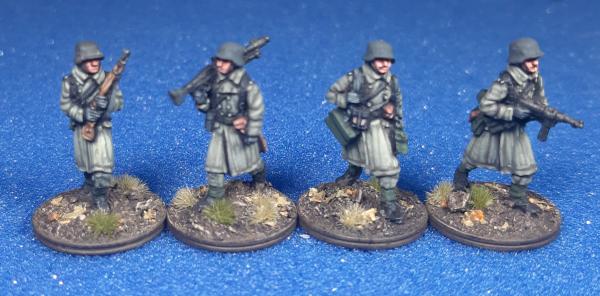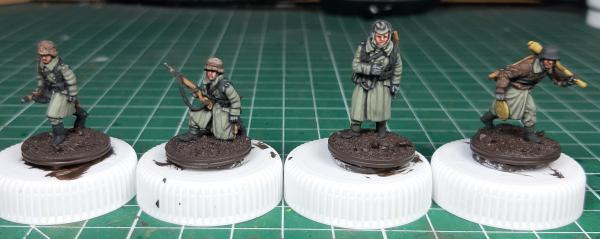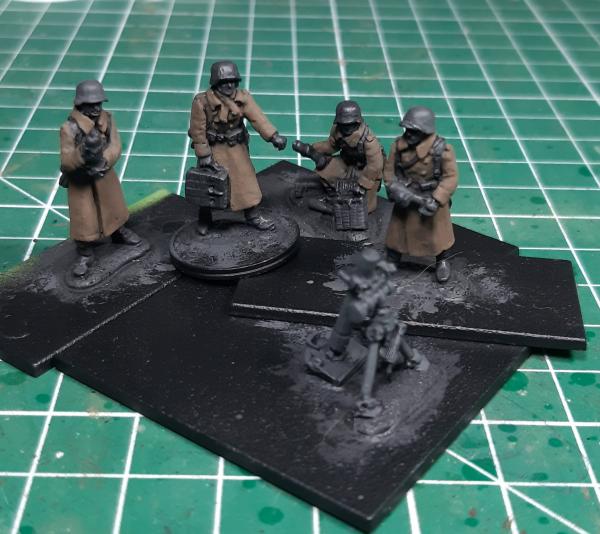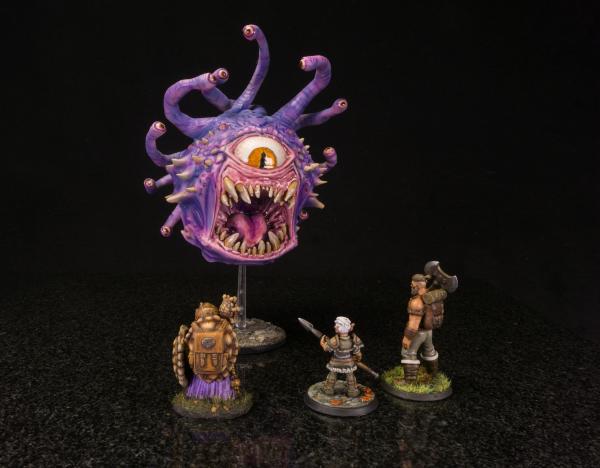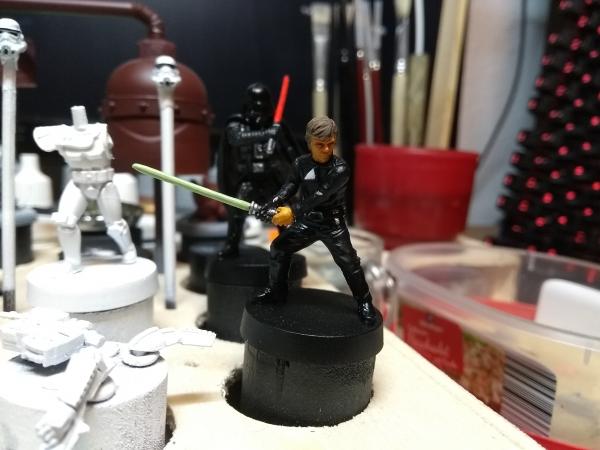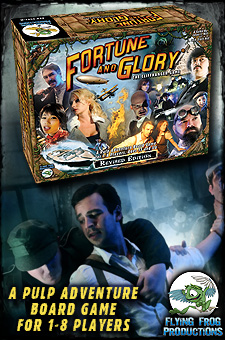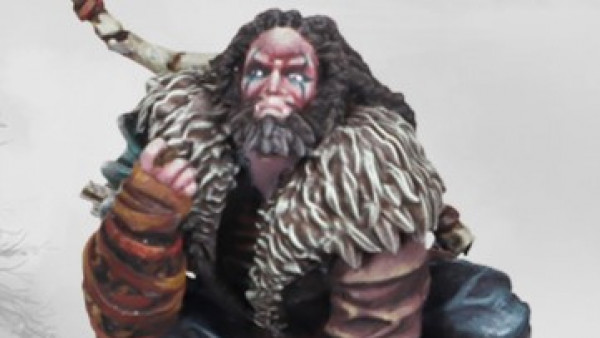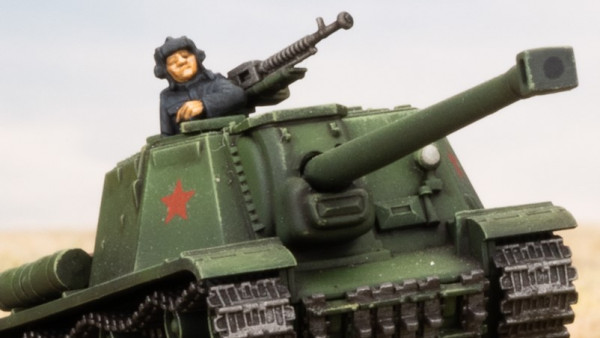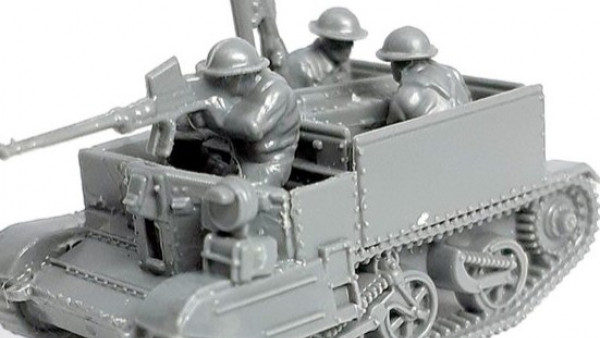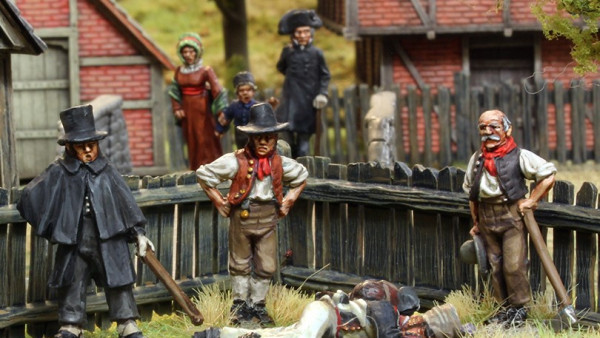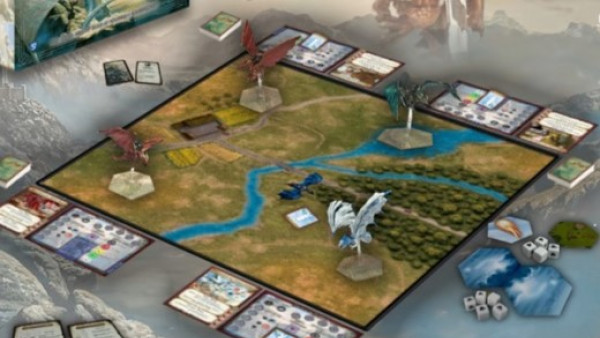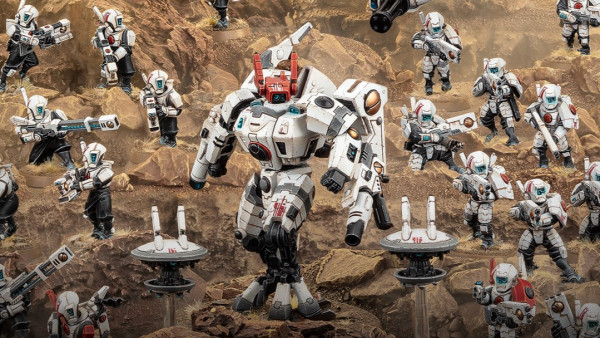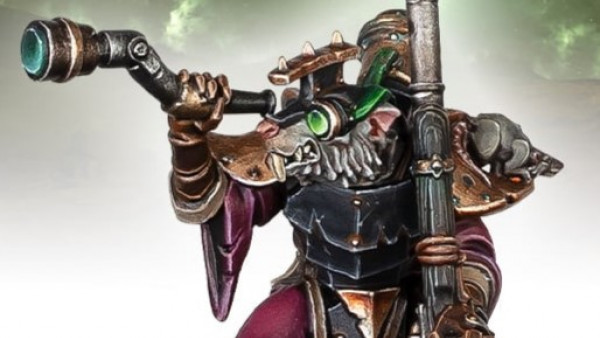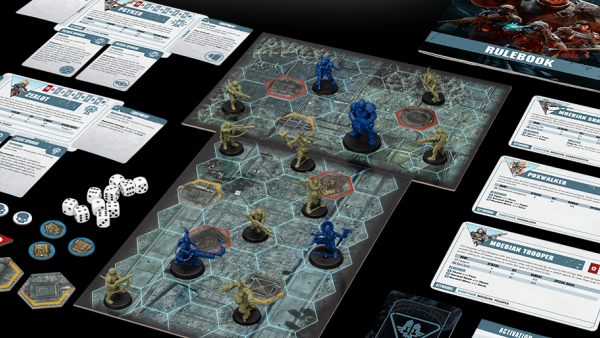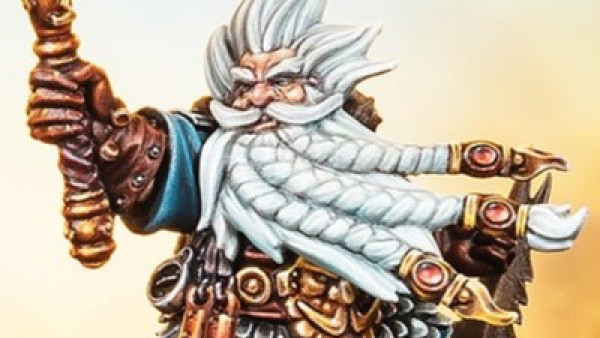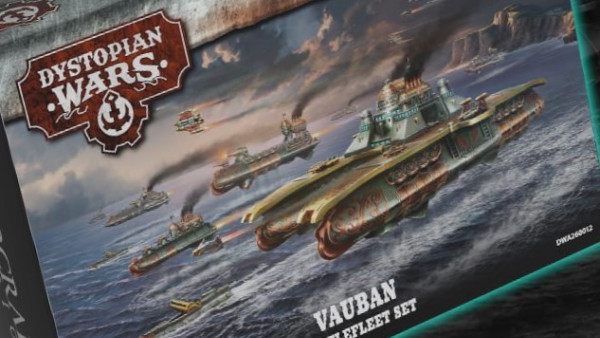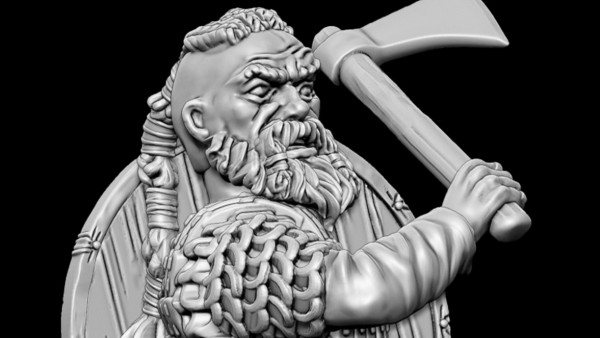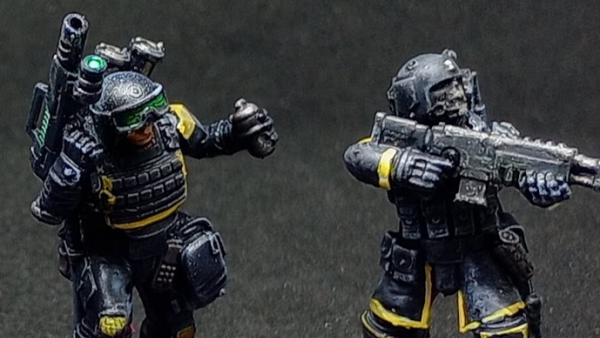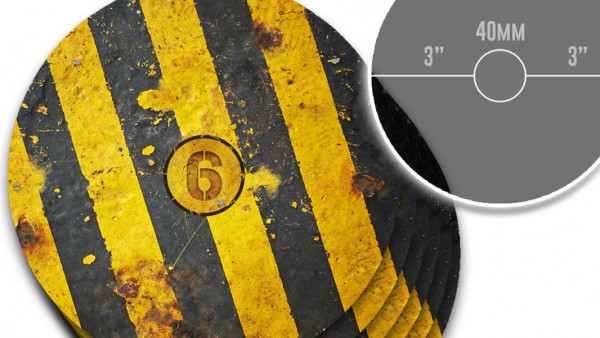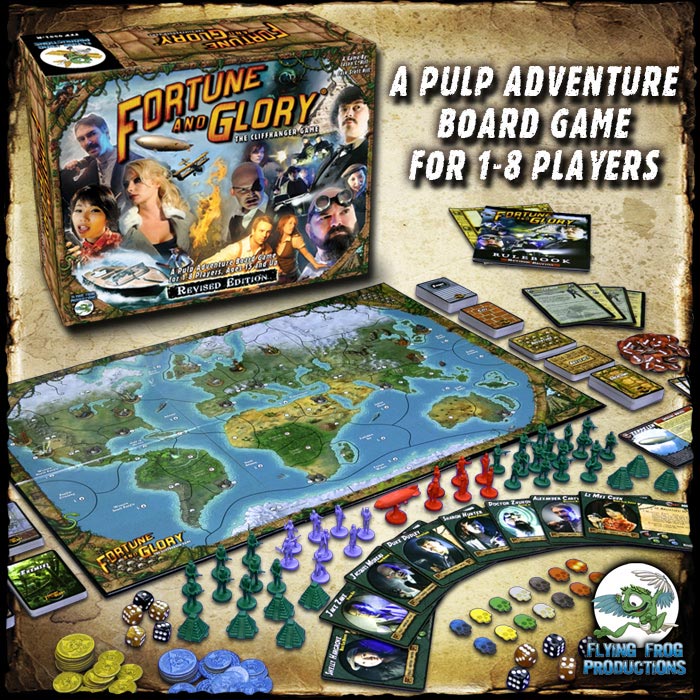Home › Forums › Painting in Tabletop Gaming › What Are You Painting Now?
Tagged: #Spellcrow, Agratoria
This topic contains 4,342 replies, has 344 voices, and was last updated by ![]() pojoh 1 day, 20 hours ago.
pojoh 1 day, 20 hours ago.
-
AuthorPosts
-
January 7, 2020 at 3:40 pm #1469181
Continuing with the final stages of my journey around the world of 1938 A Very British Civil War today I bring you more about the background to why the civil war started.
The Empire and Nation Fragments
King Edward VIII’s decision to marry Simpson caused a crisis not just in England but across the Empire as well. In Australia and New Zealand the Governments fell and new elections were called. The nationalist Governments of South Africa and Ireland used it as a pretext to finally separate themselves from Britain and the Commonwealth. De Valera, the Irish Prime Minister, also used it as an opportunity to send troops into the Province of Ulster, purportedly to help restore order and protect Eire’s borders but in effect to annex the north. The King’s brothers and their families, unwilling to become embroiled in the political furore retreated to Canada.
In India the crisis gave the independence movement cause for joy. With the British government in crisis they felt sure that they would have a freer hand. The Viceroy saw what was coming and with skilful diplomacy managed to work with the Congress to maintain the status quo during the early days of the crisis.
The fragmentation of Edward’s realm did not take place entirely overseas. Edward’s decision to marry Wallis Simpson caused a split in the Anglican Church with a majority of the Church Assembly, led by the Bishops of Hull and Bath and Wells, declaring the King unfit to act as the head of the church and forming an Anglican League aimed at replacing him with his eldest brother.
This in turn led the General Assembly of the Scottish Kirk to form a Council of State (made up of MPs, Peers, civic dignitaries and army officers from Scottish regiments) which, using the medieval Declaration of Arbroath as its template, announced that Edward was an unfit King and that Scotland would no longer recognise his rule nor that of the London Parliament. It went on to call upon all Scotsmen to assist in removing the taint of Fascism from Scottish soil. The regiment of the Scots Guards were welcomed back with honour and a number of Scottish regiments followed their example, mutinying en masse. Those battalions not serving overseas were led by their Colonels and, acting with the local authorities, forcibly disarmed and expelled the British Union of Fascists and Auxiliaries. By the end of 1937 the Council had officially closed the border with England.
Wales became divided. In the north a long tradition of anti-English sentiment formed the basis for a Welsh independence movement which sought to replace the Crown with a Welsh Republic. In the South however the sentiment was far less strong and, whilst many were unhappy with the King both on religious grounds and over the appointment of Mosley, the instinct was to remain loyal to the Crown. Edward’s advisers wanted to maintain access to Welsh Coal stocks but still treated the Welsh with suspicion fearing a repeat of the Scottish Crisis. The disbanding of the Welsh Guards heightened tension following the assassination attempt on the Royals. But in Edwin Lloyd-James, Mayor of Cardiff the south of the Principality found a leader who had insight and ability and who was prepared to be completely ruthless. Seeing how far things were deteriorating in the Principality, with the North in the hands of the nationalists, Westminster making noises about sending in troops from London and many of the mining villages setting themselves up as independent socialist communes, he welcomed home the Welsh Guards with a parade and had them based at Cardiff Castle. Their pay was picked up by the City and as far as possible their honour was restored. In return Lloyd-James had a superior military unit under his direct control ready to respond to any Nationalist threat.
Liverpool and Cornwall
Meanwhile the Nationalists had not been slow in organising, and were receiving considerable support from across the Irish Sea. Irish Republican volunteers travelled to Anglesey to meet Welsh leaders. This marked the start of a regular traffic of volunteers and advisers keen to open a second front against the British. Sympathetic individuals within the Irish Government and army were also prepared to covertly supply the Nationalists. As the guerrilla war began Nationalists infiltrated the south, attacking economic targets. The Guards provided a good defence but inevitably some operations succeeded and put further economic pressure on the south. As the first Irish prisoners were taken Lloyd-James realised this was now more than a simple internal struggle and he needed to find a way to take the war back to the Nationalists rather than remaining on the defensive. As a result he entered into talks with the Irish right-wing Blueshirts organisation. Although not any more positive towards the British Government than the Republicans, the Blueshirts welcomed the encouragement to continue their fight against the Irish Government and IRA onto Welsh soil. Consequently companies of Blueshirts were let loose in north Wales with the mission to hunt down the Nationalists and their Republican allies. A long and bitter conflict began, but it moved some of the focus away from the vulnerable south giving Lloyd-James a breathing space allowing him to turn his attention to the smaller but well entrenched socialist miners’ militias.
In Liverpool there had been considerable protest against the British Union of Fascists, culminating in a Dockers’ strike with men refusing to unload supplies and goods destined for the regime. British Union of Fascists units from Manchester arrived to break the strike and take over the city council.
Led by Socialist Mayor Henry Walpole large numbers of demonstrators took to the streets to oppose the Fascists. Peaceful protest turned to pitched battles and the Fascists soon found themselves outnumbered and driven back. The British Union of Fascists leaders called for support from Auxiliary Constabulary, but when these too gave way the army was called for. The Liverpool Regiment were the first on the scene. Ordered into the city centre they faced a crowd of several thousand still led by the Mayor. When the crowd refused to disperse the order was given to open fire. The officers of the Liverpool Regiment hesitated and then ordered their men to stand down. At this point a delegation of officers approached the Mayor and offered their services to the people of Liverpool. Not all military units followed the Liverpool Regiment, some returned to their barracks whilst others continued to support the British Union of Fascist and Auxiliaries. Liverpool’s mayor declared it a Free City, arguing that it would not participate in the madness of the rest of the country.In scenes mirrored across the counties of England Cornwall had split into a variety of small factions. Civic and religious communities were split over loyalty to the Crown. A minority still backed the king but could not support a British Union of Fascist government, while a more vocal majority argued to follow Scotland and Liverpool in seeking independence. Police units proved totally incapable of checking an increasing spiral of violence and so the Duke of Cornwall’s Light Infantry were deployed along the Tamar with the mission of keeping the factions apart.
A nationalist militia was formed and became known as the Army for Cornish Liberation or the Kernow Liberation Army. In response Royalist agents supported the more pro-Edward party by creating a rival Cornish Democratic Royalist Party with its own militia.
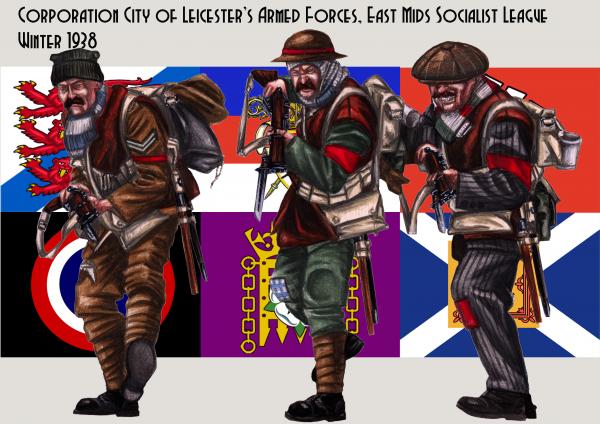 January 8, 2020 at 1:06 am #1469264January 8, 2020 at 8:17 am #1469319
January 8, 2020 at 1:06 am #1469264January 8, 2020 at 8:17 am #1469319Here is is the final one about the world of 1938 A Very British Civil War, the third part into the causes of the civil war.
War Breaks Out
Although not strong enough to attempt full independence the Kernow Liberation Army began a guerrilla war not confined to Cornwall but straying into Devon, attacking bases that could potentially give support to the Royalists. However this brought the Kernow Liberation Army into direct contact with both the Devonshire Regiment, attempting to keep the peace in the neighbouring county, and units of Royal Marines stationed at Plymouth and along the South Devon coast endeavouring to prevent gun running smugglers. Finding themselves outclassed the Kernow Liberation Army retreated, but the Devonshires and Marines continued their pursuit across the Tamar, which in turn brought them to a confrontation with the Duke of Cornwall’s Light Infantry. The confusion of the pursuit and the sympathies of officers and men of the Duke of Cornwall’s Light Infantry to the plight of their counties led the regular forces to fire on each other. After some skirmishing, the Devonshire units withdrew but a line had been crossed quite literally, and Army and Marine units were now working independently of the higher command.
Across the country army units, who had initially been reluctant to get involved found themselves drawn into the conflict. Lacking clear direction from General Staff, who became paralysed as they sought to avoid becoming embroiled in the political and constitutional arguments, officers on the ground responded to the local situation and, as in Liverpool and Cornwall, made their decisions as they saw fit. Soon the British army was fatally divided and units were fighting on opposite sides.
The Royal Navy and Royal Air Force also became divided. Traditionally politicised and still imbued with the spirit of the Invergordon mutiny a mere six years earlier, naval crews gravitated toward the left, offering their support. In contrast he RAF found more of its personnel in sympathy with the Royal faction, some with the British Union of Fascists, and so for the most part the RAF stayed loyal to Edward and the Government.
The country in 1938 is divided into regions each with their own peculiar struggles. Liverpool is in a state of siege, with constant street-fighting between fascist and independent forces. The anti-fascist forces there are by no means united and certain enclaves are starting to set themselves apart from Walpole’s Council. Wales is fighting its own guerrilla war between the Nationalist north, the moderate south and the socialist mining communes. Scotland, recognising that a weak and divided England is in its best interests, at least for the moment, has begun armed intervention in the north of England. In the south-east the British Union of Fascists is dominant. Its Legionary forces are as well-equipped and motivated as the rump of the army. In January a Legion force, supported by loyalist military units, drove out of London against the Anglican League’s stronghold at Canterbury. In the rural areas, such as Somerset or Cornwall, there is a constant low-level fight between the various factions as each vies for dominance.
The war is not taking place in a vacuum however. The fascist nations of Italy and Germany, whilst shocked at the sudden collapse of what had appeared the most stable and country in Europe, watch the struggles with interest and concern, whilst Soviet Russia has started sending some limited support to beleaguered Liverpool, which it sees as being the main stronghold of the British left. In Canada there are growing calls amongst ex-patriots for the King’s brothers to do something to intervene, with the aim of restoring the country to constitutional monarchy and parliamentary democracy, whilst the eccentric and highly religious General Wynd-Grator, the latest appointee to the Middle Eastern Command, has embarked his India Army troops on transports and is crossing the Mediterranean with the intention of ‘restoring Britain to the Godly’.
The Military Organisation of the Factions
Given the background and training of their soldiers the various factions have generally organised their military wings along British Army lines, with squads of ten men, through platoons and companies to battalions and, in the case of the rump army and the Scottish Republic, brigades. Cavalry, armoured car and tank units are organised into troops; very few are strong enough to form squadrons. Rank structures show a greater variety, particularly amongst the left wing militias and the British Union of Fascists Legion, but for the most part follow British army practice too.
When the British army fragmented in 1937 much of its equipment went with it. In various towns across the country arsenals were opened and emptied by local defence forces and militias. Thus the dominant style of uniform, when there is one, is also British army. The same is true of arms, with the Webley revolver and the short magazine Lee Enfield being the dominant small arms, the Lewis gun and Vickers machine guns as support weapons. Sporting rifles and shotguns are also very common amongst the militias. Bicycles are one of the main forms of transport for both regular troops and militias. Lorries and cars are plentiful, being volunteered or requisitioned from civilian sources, even if fuel is not. These are often armoured in a more or less haphazard manner.
In areas of heavy industry (or indeed those towns where the vehicles are produced) they can be very professional jobs, in rural areas the “armour” may consist of little more than corrugated steel and railway sleepers or tree trunks.
If anyone want more please shout one.
 January 9, 2020 at 12:34 am #1469510January 9, 2020 at 4:41 pm #1469642
January 9, 2020 at 12:34 am #1469510January 9, 2020 at 4:41 pm #1469642I’m mostly painting stormtroopers..
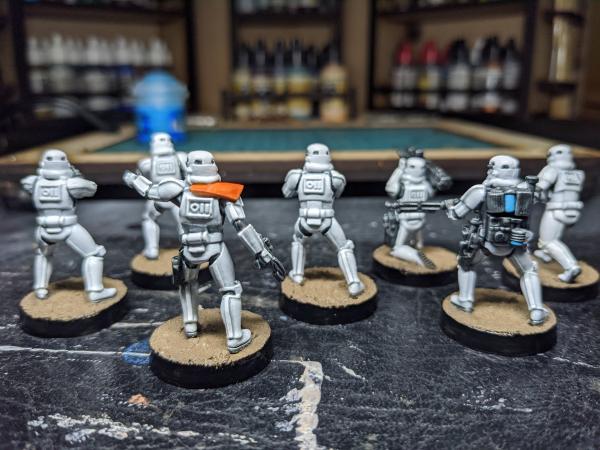
 January 10, 2020 at 9:43 pm #1469870
January 10, 2020 at 9:43 pm #1469870Some more progress on my 8th Army project…it’s getting to the finish line…for more infos have a look here:https://www.beastsofwar.com/project/1313996/
EDIT: I put up some new pics as the former ones where rather dark due to bad light during shooting.
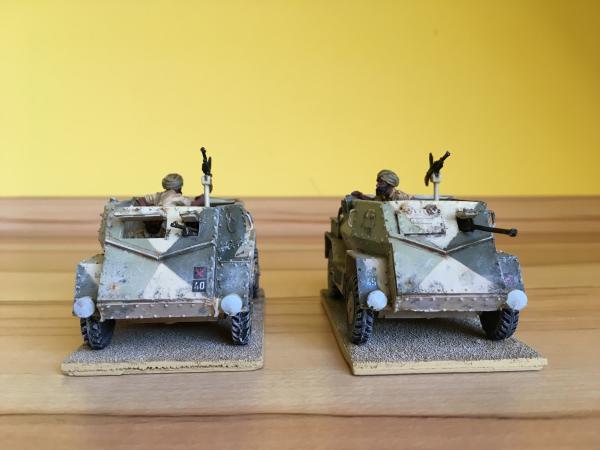
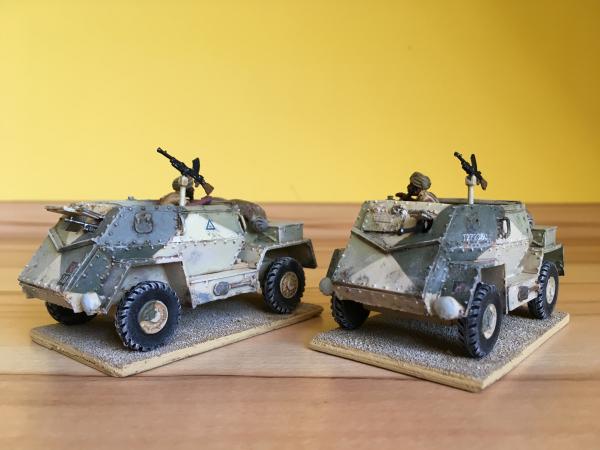
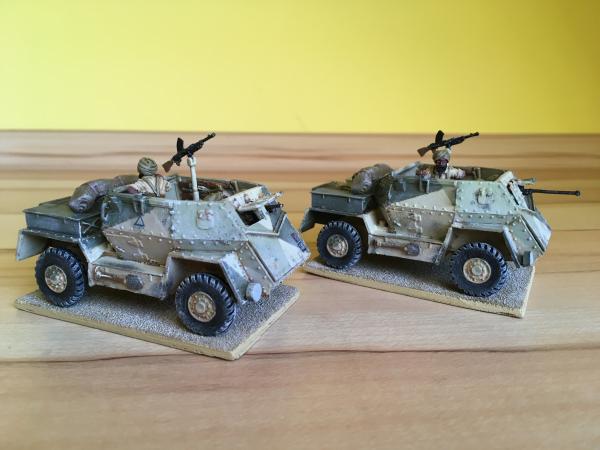
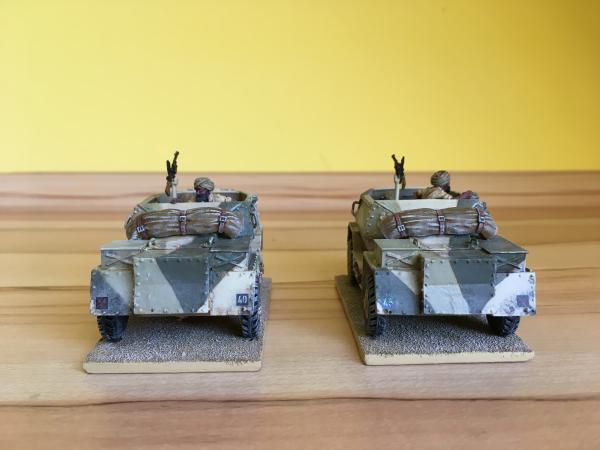
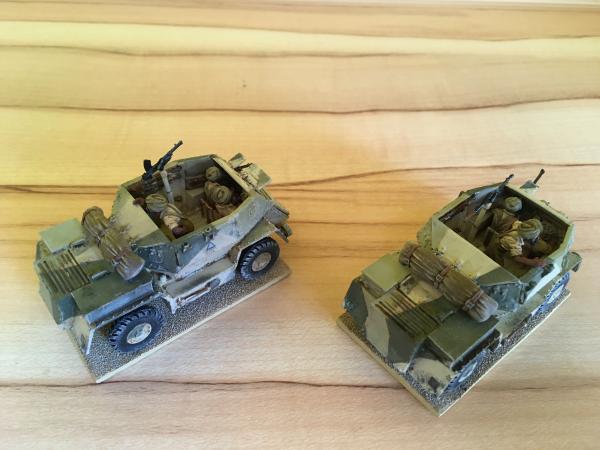
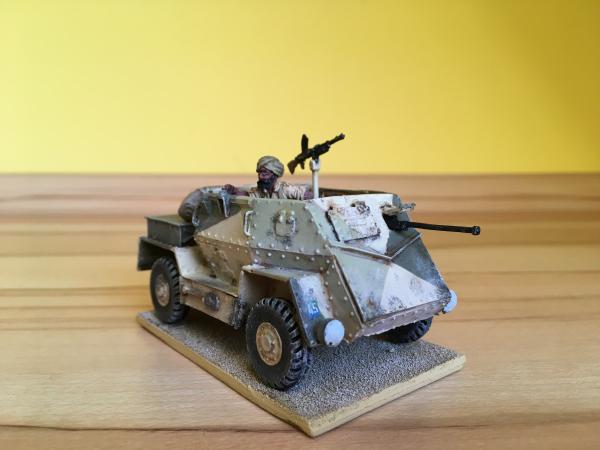 January 11, 2020 at 3:16 am #1469903January 11, 2020 at 12:32 pm #1469970January 11, 2020 at 1:02 pm #1469973
January 11, 2020 at 3:16 am #1469903January 11, 2020 at 12:32 pm #1469970January 11, 2020 at 1:02 pm #1469973Two units done now
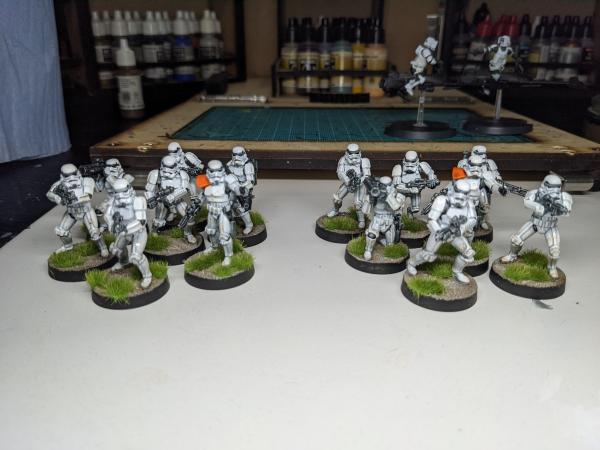 January 11, 2020 at 9:29 pm #1470039
January 11, 2020 at 9:29 pm #1470039After xmas I gathered up the useful bits and bobs from my daughters eviscerated presents and thought I’d make use of the packaging to make some terrain bits. The trash build terrain is now complete,, built from Polystyrene corner protectors from a keyboard, plastic blisters, the bases are made from the corrugated cardboard, I’ve also included a couple of pieces that have been sat in the “awaiting motivation to finish” pile they are also recycled bits, in this case glue stick packets, bubble tape dispensers and NOS canisters. all finished off with random assortments of plastic greenery. Now I just need to actually use some of it for a game….
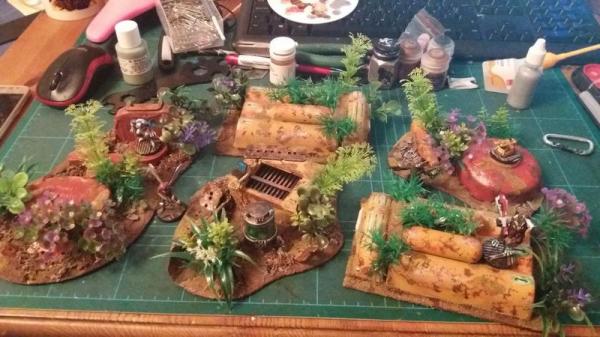
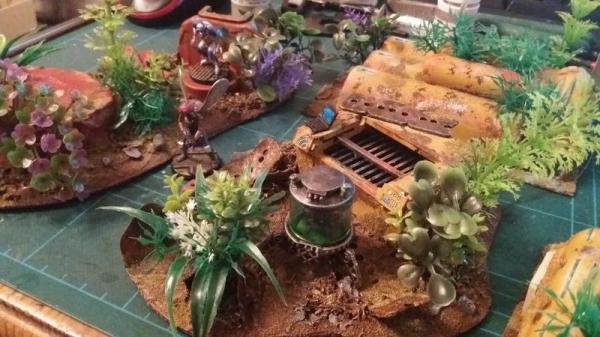

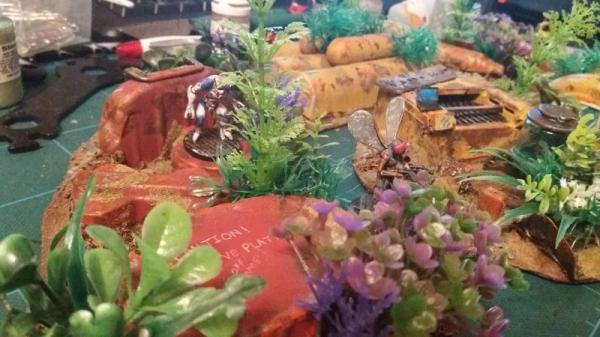
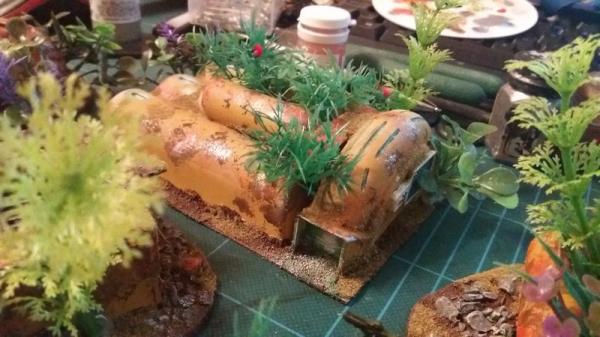
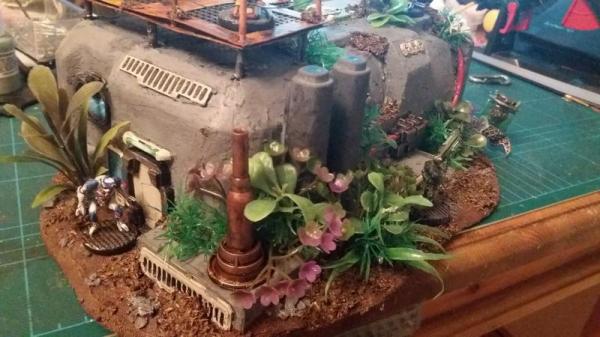
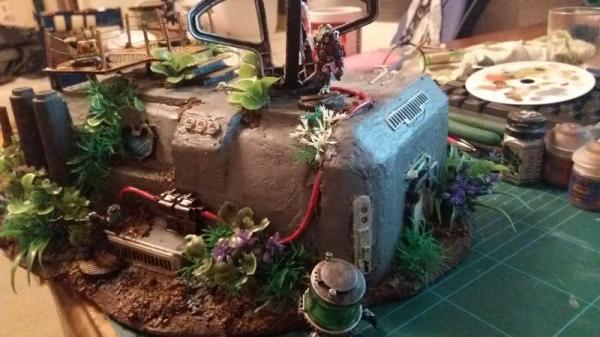
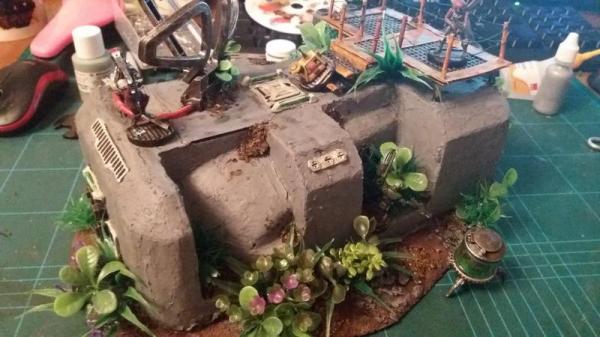 January 12, 2020 at 12:51 am #1470060
January 12, 2020 at 12:51 am #1470060Getting to assemble my “I am the law ” box and the rest. Starting with the judges (prepping them for home-made bases before painting) and Dredd himself.
Just like I knew it would happen, it’s nearly impossible to have the hands fitting on the handles of the bike (well… If I had wanted to keep Dredd on the bike, it wouldn’t have been a problem, but since the rules allow you to play mounted/unmounted models…), so I magnetized the pilot (sorry Dreddy, this was the only place where I could fit a magnet…)

 January 12, 2020 at 4:02 am #1470085
January 12, 2020 at 4:02 am #1470085Continuing with my Saga: Age of Magic army, more dwarves! This tome some spearmen and a banner man.


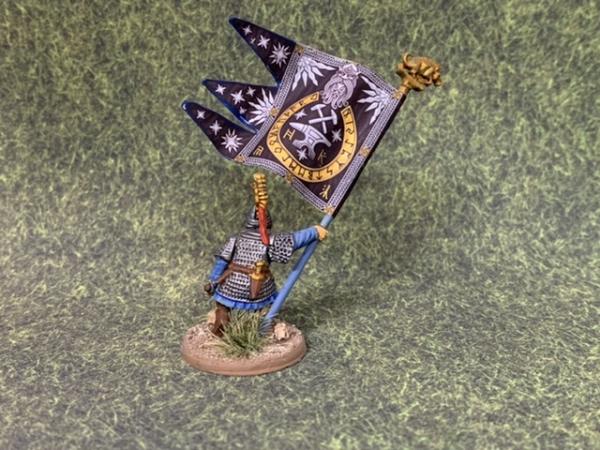
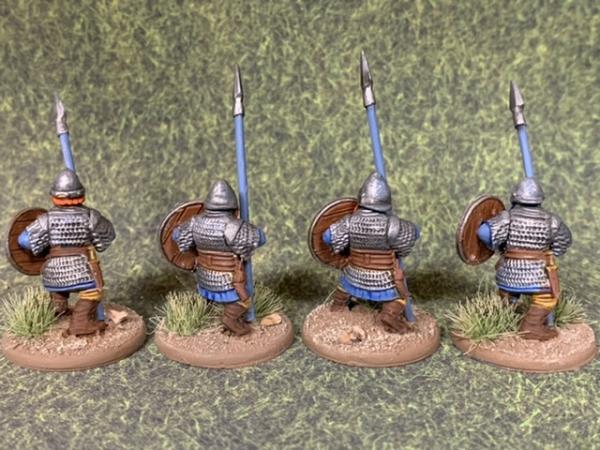
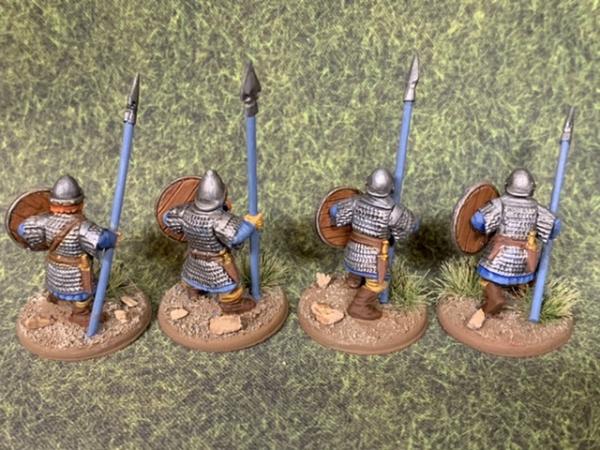
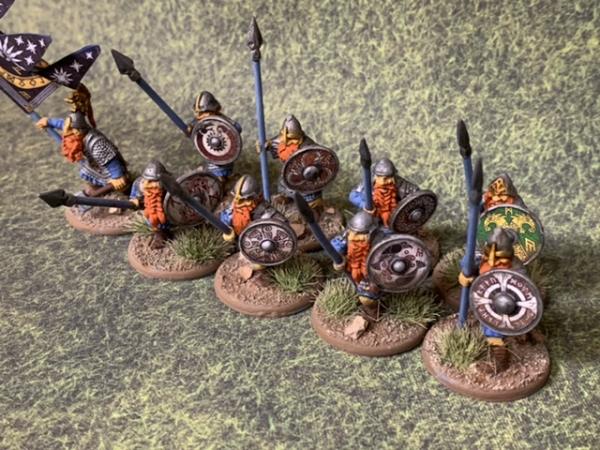
 January 12, 2020 at 2:10 pm #1470129
January 12, 2020 at 2:10 pm #1470129Some finished Spacemarine characters. My first set painted in 2020.
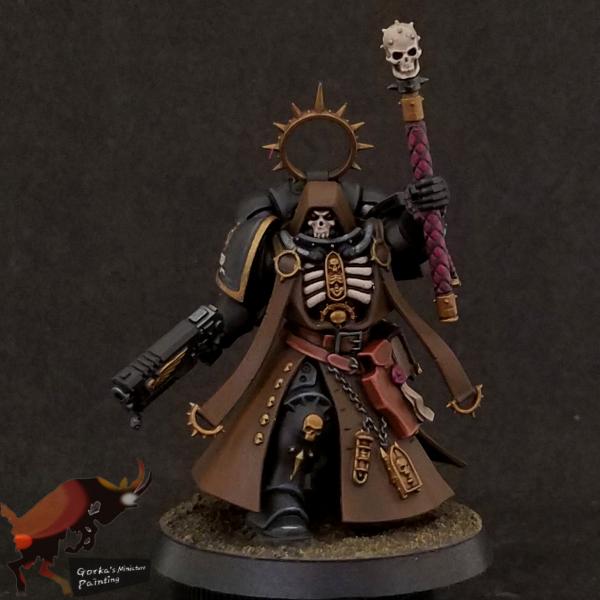

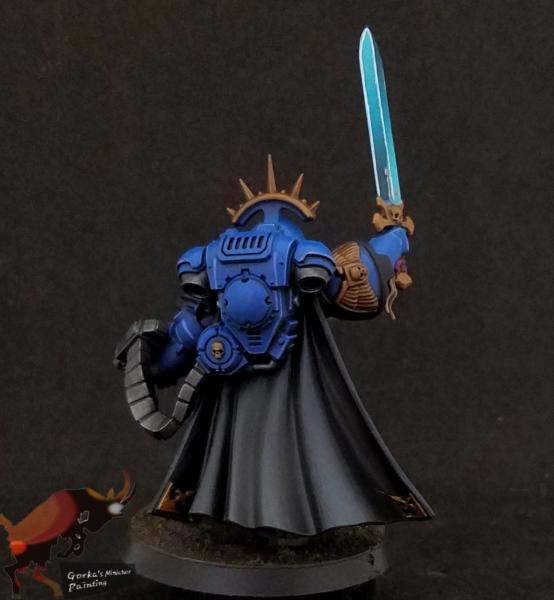
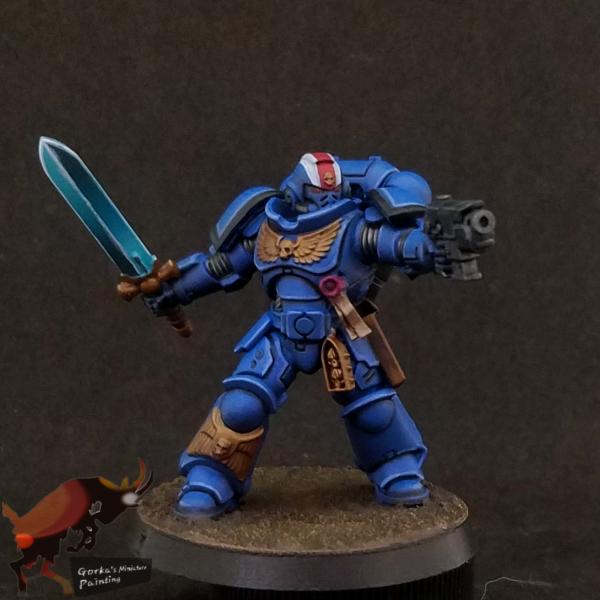
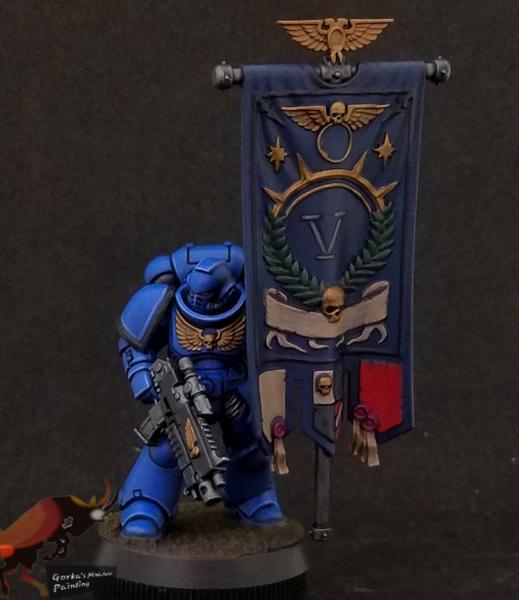
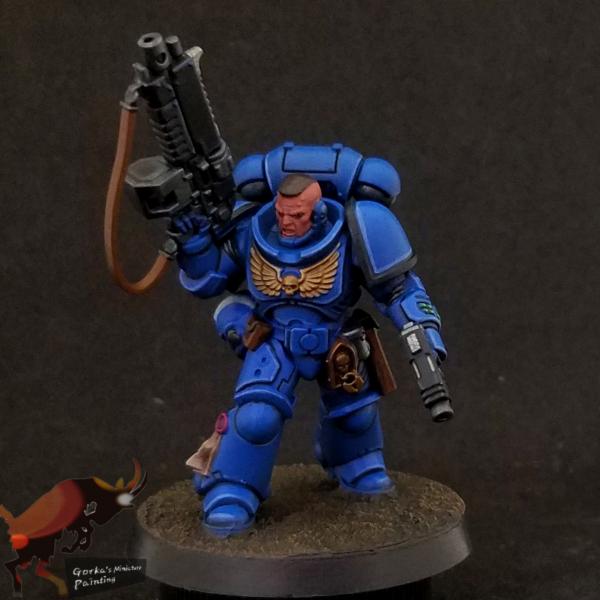 January 13, 2020 at 9:34 am #1470240January 13, 2020 at 10:24 am #1470268
January 13, 2020 at 9:34 am #1470240January 13, 2020 at 10:24 am #1470268@darkvernon I feel your pain. I always cringe drilling in those areas 😮
-
AuthorPosts
You must be logged in to reply to this topic.































